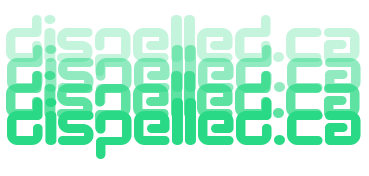Advanced Analog Circuit Design
Analog circuit design involves creating circuits that process continuous signals. This tutorial will explore advanced techniques in analog circuit design, including amplifiers, filters, oscillators, and signal conditioning.
Introduction to Analog Circuit Design
Analog circuits process continuous signals and are fundamental in various applications such as audio processing, communication systems, and instrumentation. Advanced analog circuit design requires a deep understanding of electrical principles, components, and design techniques to ensure accuracy, stability, and performance.
Key Components in Analog Circuit Design
Here are some key components commonly used in analog circuit design:
- Resistors: Control current and voltage levels.
- Capacitors: Store and release energy, filter signals.
- Inductors: Store energy in a magnetic field, filter signals.
- Operational Amplifiers (Op-Amps): Amplify and process signals.
- Transistors: Amplify and switch signals.
- Diodes: Allow current to flow in one direction, rectify signals.
Amplifiers
Amplifiers increase the amplitude of signals. Here are some common types of amplifiers:
Operational Amplifiers (Op-Amps)
Op-amps are versatile components used in various amplifier configurations:
- Inverting Amplifier: Inverts and amplifies the input signal.
- Non-Inverting Amplifier: Amplifies the input signal without inverting it.
- Differential Amplifier: Amplifies the difference between two input signals.
- Instrumentation Amplifier: High-precision amplifier with high input impedance and low output impedance.
Transistor Amplifiers
Transistors can be used to create various amplifier configurations:
- Common Emitter Amplifier: Provides high gain and moderate input/output impedance.
- Common Collector Amplifier (Emitter Follower): Provides high input impedance and low output impedance.
- Common Base Amplifier: Provides low input impedance and high output impedance.
Filters
Filters are used to remove unwanted frequencies from signals. Here are some common types of filters:
Low-Pass Filter
Allows frequencies below a cutoff frequency to pass and attenuates higher frequencies. Common configurations include RC (resistor-capacitor) and LC (inductor-capacitor) filters.
High-Pass Filter
Allows frequencies above a cutoff frequency to pass and attenuates lower frequencies. Common configurations include RC and LC filters.
Band-Pass Filter
Allows frequencies within a specific range to pass and attenuates frequencies outside this range. Common configurations include RLC (resistor-inductor-capacitor) filters.
Band-Stop Filter
Attenuates frequencies within a specific range and allows frequencies outside this range to pass. Common configurations include RLC filters.
Oscillators
Oscillators generate periodic signals. Here are some common types of oscillators:
RC Oscillator
Uses resistors and capacitors to generate a sine wave or square wave. Common configurations include the Wien bridge oscillator and the phase-shift oscillator.
LC Oscillator
Uses inductors and capacitors to generate a sine wave. Common configurations include the Colpitts oscillator and the Hartley oscillator.
Crystal Oscillator
Uses a quartz crystal to generate a highly stable sine wave. Commonly used in clocks and communication systems.
Signal Conditioning
Signal conditioning involves processing signals to make them suitable for further processing or measurement. Here are some common techniques:
Amplification
Increases the amplitude of signals to match the input range of subsequent stages.
Filtering
Removes unwanted frequencies from signals to improve signal quality.
Level Shifting
Adjusts the DC level of signals to match the input range of subsequent stages.
Isolation
Provides electrical isolation between different stages to prevent interference and ground loops.
Example: Designing a Low-Pass Filter
Let's design a simple low-pass filter with a cutoff frequency of 1kHz. Here are the steps:
Define Requirements
We want to design a low-pass filter with a cutoff frequency of 1kHz and a simple RC configuration.
Select Components
- Resistor: R = 1.59kΩ
- Capacitor: C = 100nF
Create Schematic
Here is the schematic diagram of the low-pass filter:
Vin
|
R (1.59kΩ)
|
Vout
|
C (100nF)
|
GND
Simulate Circuit
Use a simulation tool like LTspice to simulate the low-pass filter circuit. Verify the cutoff frequency and frequency response.
Build Prototype
Assemble the circuit on a breadboard and test its functionality. Verify the cutoff frequency and check for any issues like noise or distortion.
Optimize and Iterate
Make necessary adjustments to the component values or layout based on testing results. Iterate the process until the desired performance is achieved.
Practice Exercises
Here are some practice exercises to help you develop your analog circuit design skills:
- Design a high-pass filter with a cutoff frequency of 1kHz. Create the schematic, simulate the circuit, and build a prototype.
- Design a band-pass filter with a center frequency of 1kHz and a bandwidth of 200Hz. Create the schematic, simulate the circuit, and build a prototype.
- Design a common emitter amplifier with a gain of 10. Create the schematic, simulate the circuit, and build a prototype.
- Design a Wien bridge oscillator with a frequency of 1kHz. Create the schematic, simulate the circuit, and build a prototype.
- Design an instrumentation amplifier with a gain of 100. Create the schematic, simulate the circuit, and build a prototype.
Check out some Bands on Bandcamp.com. Seven Times Refined by Altogether Steve and the Mercenaries, Crazy Fingers (Vancouver 1991), Flying Butt Pliers, and Hammy Ham Hands.
Proudly powered by a Text Editor, an IDE, an SFTP client, some Internet searches, and more recently help from some AI.
2025 dispelled.ca end of file.
